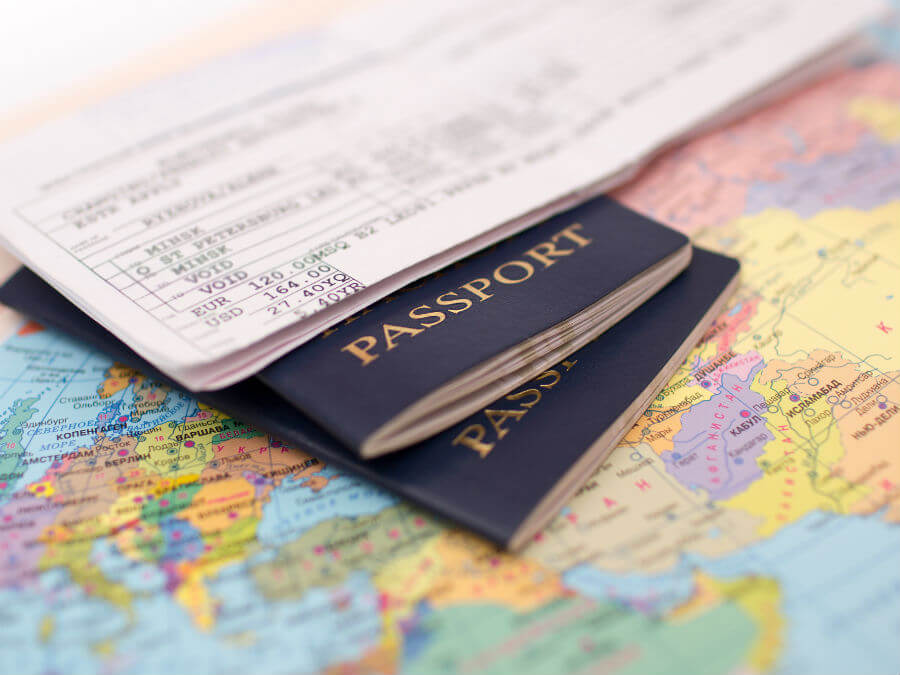
Identifying and avoiding taxi scams
There you stand, outside a foreign airport after a 15-hour red eye flight. You load your suitcase into the boot of a taxi while the driver sits casually in the front. You turn around to pick up your last bag from the sidewalk, go to load it into the taxi… but that taxi isn’t there. You watch helplessly as your bags recede into the twisting city streets, and wonder how much a replacement wardrobe will cost.
Unfortunately, taxi scams like these happen frequently all around the world. And disappearing taxis aren’t even the worst of it.
Unsuspecting travellers have reported pre-organised robberies while sitting in traffic, fake taxi drivers with mystery destinations, and even drivers drugging them through poisoned air-conditioning. Thankfully, with the right precautions you can ensure you get from A to B with your belongings beside you.
We outline some of the most common taxi scams found around the world, and how travellers can spot them before it’s too late.
Where in the world do taxi scams happen?
Taxi scams have traditionally been most common in Asian countries, like India, Thailand, Vietnam, China, Malaysia and the Philippines. However, many European and Central and South American travellers have reported falling victim to some form of taxi scam. The truth is, dishonest taxi drivers exist everywhere in the world, and unwary travellers are an attractive target for opportunistic petty thieves.
How do I avoid taxi scams?
There are several easy ways that travellers can ensure they don’t fall victim to taxi scams. The first and most important thing to look out for when hailing a taxi is to always check whether it is licensed. Licensed taxis will be marked with the city’s taxi company name.
If you’re outside the airport, licensed taxis can always be found at the taxi rank. If a driver beckons you into his car which isn’t marked as an official taxi, ignore them and move along. Also, if a driver beckons you to a marked taxi, then walks to an unmarked car and opens the door, move along. If you enter an unmarked taxi by mistake, and notice that the driver doesn’t have a license on display, apologise and exit the taxi before directing them to your destination.
Other precautions to take include writing down the driver’s details, keeping your luggage in the car with you, rather than in the boot, and locking doors while sitting in traffic. We’ll explain how to protect yourself against taxi scams in more detail below, but first let’s outline some of the most common taxi scams found around the world.
Common taxi scams around the world
Dishonest taxi drivers have probably existed since taxis were horse-drawn in the 17th century. Some of the tricks to look out for are well known, like when the driver takes an unnecessarily long route or hands you short change. However, some scams like those emerging in the Philippines are more difficult to spot, and can leave you in more danger than a few dollars out of pocket.
1. Meter mischief
When you board a taxi, always be sure to pay close attention to the meter reading. If the amount displayed before you start your trip seems excessive, your driver may be using a night time or holiday fare. Alternatively, you may notice your fare price jumps substantially at one point in your journey. In this case, the meter may be rigged. Deceitful drivers may also claim their meter is broken, or conceal it, and then ask for an excessive fare.
How do I avoid taxi meter scams?
An easy way to deter would-be meter scammers is to make it obvious you’re paying close attention. When you enter the taxi, jot down the driver’s registration details, which will usually be displayed next to the rear view mirror, and also take note of the starting fare. If anything seems out of place with the meter, or it isn’t operating, raise this with your driver before indicating where you’d like to go.
If your driver has been dishonest with the fare, they will often stop a few buildings back from your hotel. Scamming drivers don’t want to be seen and exposed by hotel staff, so always request they stop out the front, and raise any concerns with hotel staff.
2. Route rip offs
Drivers taking an unnecessarily long route to get the maximum fare is a common taxi scam around the world. Most of the time this scam is designed to have you sit in traffic, or clock up a few extra kilometres so you pay a higher fare. However, sometimes taking a scenic route can leave you in more danger. Taxis and tuk tuks in Southeast Asia have been known to stop in secluded locations and demand valuables, leaving passengers in a dangerous and vulnerable position.
How do I avoid route rip offs?
Again, the best way to deter opportunistic taxi drivers is to make it clear that you are paying close attention. Displaying a map on your phone while driving is a perfect way to do this. Even if it’s a map from another country, your driver will think that you’re paying attention to the route they take and see that you’re not an easy target.
3. Luggage losses
Losing your luggage overseas has to be one of the most frustrating and upsetting things to happen while travelling.
At every moment of travelling, it’s so important that you treat your luggage like you would treat your wallet or your phone. So ask yourself, would you place your wallet in the boot of a taxi while you stand on the sidewalk?
Luggage scams are another common way taxi drivers can deceive unwary travellers. This can be as simple as driving away while you load your bags into the boot. More calculated plans include having an accomplice steal your bags while the driver distracts you. When you notice your bags have vanished, the driver offers their insincere condolences.
How do I avoid luggage losses?
Always keep as much luggage with you in the back of the taxi as you can. While larger bags will need to go in the boot, request that your driver loads them in for you and keep your door open to deter a getaway. Always keep an eye on your bags, and never leave them on the street and out of view while boarding the taxi. Also be sure to keep your most important possessions, like passports, in a day pack that stays securely locked and with you at all times.
Opportunistic taxi drivers are an unfortunate reality of travelling overseas, but with these precautions you can ensure you avoid falling victim to common scams.
Also remember that it’s not always worth arguing over a small sum of money, it’s better to lose some money and keep yourself and your fellow travellers safe. So if you find yourself in confrontation with a taxi driver over a few dollars, it’s probably easiest to walk away.
The content of this article is general and provided for information purposes only. Southern Cross Travel Insurance (SCTI) doesn’t guarantee or warrant the accuracy, completeness or currency of any article.
This article may contain hyperlinks to other websites owned or operated by third parties, or references to third party products or services. SCTI isn’t responsible for, and makes no recommendation about, the content or accuracy of any third party website, or for the suitability or performance of any product or service. The inclusion of a link in this article doesn’t imply that SCTI endorses the website or third party product/service.





